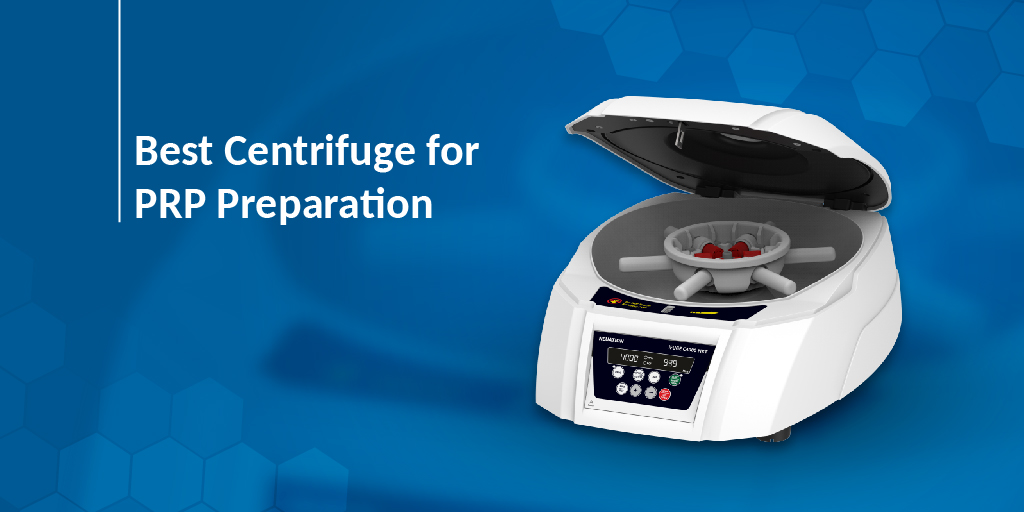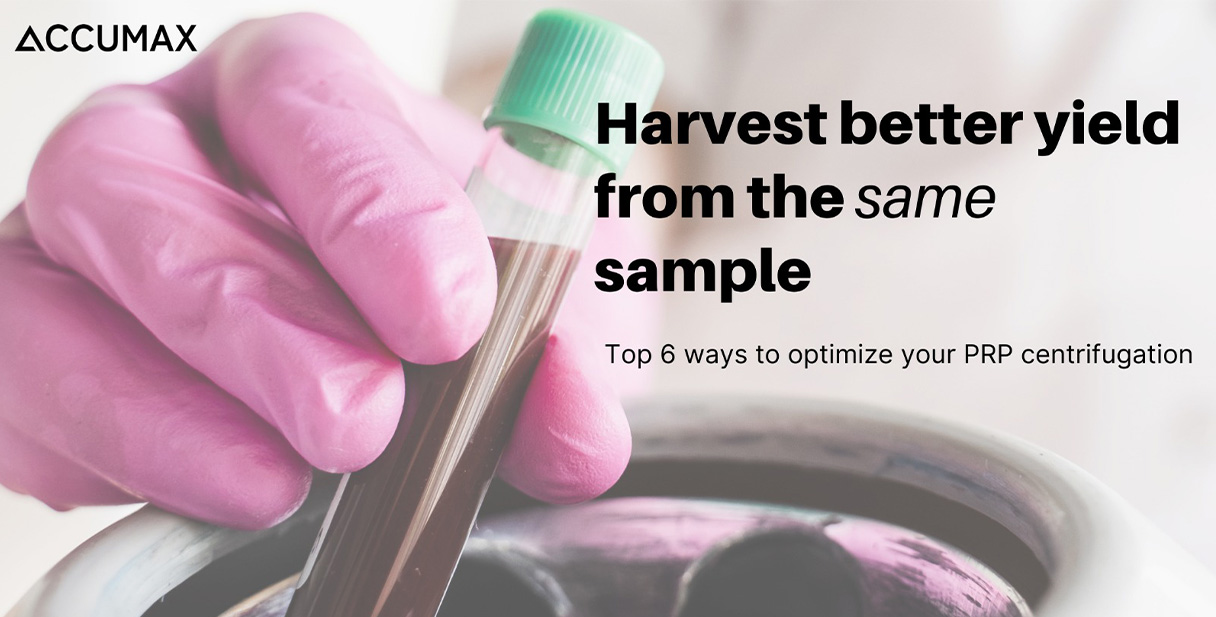Platelet rich plasma PRP therapy is a type of regenerative medicine that employs a patient’s own platelets to address medical and aesthetic concerns. By administering injections of their own platelet concentrate, the body’s natural healing mechanisms are activated. Proper preparation of PRP is crucial for maintaining the viability of platelets and this is typically achieved through the use of a PRP centrifuge.

This blog will cover the essential guidelines for centrifugation in PRP treatment. The ideal centrifugation method to achieve optimal platelet concentration depends on the type of PRP therapy required for the patient. To ensure a successful administration of the treatment, it is important to use the appropriate PRP kit for platelet activation and recovery. Factors such as time and speed of centrifugation force are also taken into account to attain a favorable platelet yield.
In this blog, we shall touch base the best practices for centrifugation during PRP treatment. The method used to get optimal platelet concentration will depend on the kind of PRP therapy the patient needs. Using the right PRP kit for platelet activation and platelet recovery is essential for the successful administration of the treatment, as well as factors like time and speed of centrifugation force are considered in getting favourable platelet yield.
Understanding the Centrifugation Process for Platelet-Rich Plasma

Centrifugation is a process used to separate the blood cells from the liquid plasma in PRP therapy. It is the initial step in collecting autologous platelets for the treatment injection. To begin, a clinician will carefully draw a blood sample from the patient’s arm using a syringe. An anticoagulant, such as sodium citrate, is added to prevent clotting of the blood sample after extraction.
Following blood extraction, the sample is stored in a test tube and subjected to rapid spinning using a centrifugation device. The centrifugation process causes the red and white blood cells to settle at the bottom of the tube, leaving the plasma at the top. Utilizing a PRP centrifugation machine streamlines this process, providing a plasma sample with a high concentration of platelets.
Factors that can affect the Centrifugation process
Blood platelet centrifugation is a crucial step in preparing PRP, as it is essential to efficiently extract the growth factors that are necessary for platelet treatment to be effective. However, there are several other factors that can impact the final platelet sample and the concentration of the platelet-rich plasma solution. These variables include:
1. Selection of centrifuge model
The Neuation’s swing out rotor Centrifuge is a frequently used model for preparing platelet-rich plasma (PRP) because it is considered the best option for achieving optimal separation of plasma components based on their density. This is due to its swing-out (horizontal) design, which is superior to angled centrifuges in minimizing cell trauma and damage, resulting in higher quality PRP.

When utilizing commercial PRP preparation kits, it is important to carefully select the appropriate centrifuge based on the type of collection tubes being used. Following the manufacturer’s instructions is crucial in order to ensure that the correct centrifuge is selected for optimal results.
2. Method of spinning

There are two prevalent techniques used in the spinning process for PRP: single spin and double spin. The gel system utilizes the single spin technique, whereby osmosis generates a barrier that separates the blood cells and the plasma.
Conversely, the double spin technique involves two stages. Initially, the blood is subjected to a hard spin to disintegrate the RBCs, WBCs, and plasma. Subsequently, a second, gentler spin further separates the blood components, resulting in an elevated concentration of platelets.
According to some practitioners, single spin PRP preparation kits may not yield high concentrations of platelets since the gel used in the kit only separates platelets of a specific density. This means that only platelets with similar weights to the gel may be isolated during centrifugation, while others are left behind. In order to achieve a higher concentration, some doctors may opt to perform a second spin on the blood sample.
3. Centrifuge time

Typically, centrifugation devices rotate blood samples for approximately 10 minutes. However, a recent study has demonstrated a correlation between the duration of centrifugation and the final composition of the resulting PRP sample. The study examined blood samples that were spun at a low setting for either 6 or 10 minutes. Samples that were centrifuged for 10 minutes showed higher concentrations and better platelet recovery compared to those processed for only 6 minutes. These findings suggest that controlling the duration of centrifugation is a crucial factor that can affect the concentrations and platelet recovery of the PRP sample.
4. Speed

The centrifuge’s speed and force have a significant impact on the blood separation process. A higher centrifugal force applied by the device leads to increased rotation, resulting in improved separation of the platelets and blood cells. The speed of centrifugation is usually measured in revolutions per minute (rpm), and when it comes to blood samples, the standard centrifugation speed is 3400 rpm, unless otherwise indicated.
5. Temperature

High-speed blood spinning can generate friction, which raises the temperature of the sample. This temperature increase can cause the concentrated platelets to enter the activation phase prematurely, leading to reduced viability and platelet aggregation. Recent studies suggest that reducing the temperature to a range of 12°C to 16°C during centrifugation may improve platelet recovery and increase their viability.
Conclusions
Despite the numerous methods available for preparing platelet-rich plasma (PRP), the most effective approach may not always be clear when aiming to facilitate tissue repair and bone growth through therapeutic use. This blog offers recommendations to assist in optimizing the preparation of PRP in clinics and labs, with the goal of enhancing the quality of treatment provided to patients. The Neuation iFuge C4000 NXT stands out as the premier choice for PRP preparation, offering unparalleled efficiency and performance.
Aanak Goswami
12+ Years of experience in generating growth for organisations. Having customer management skills with experience of Research, Institutional, clinical diagnostics, Healthcare and Biopharma customers.


